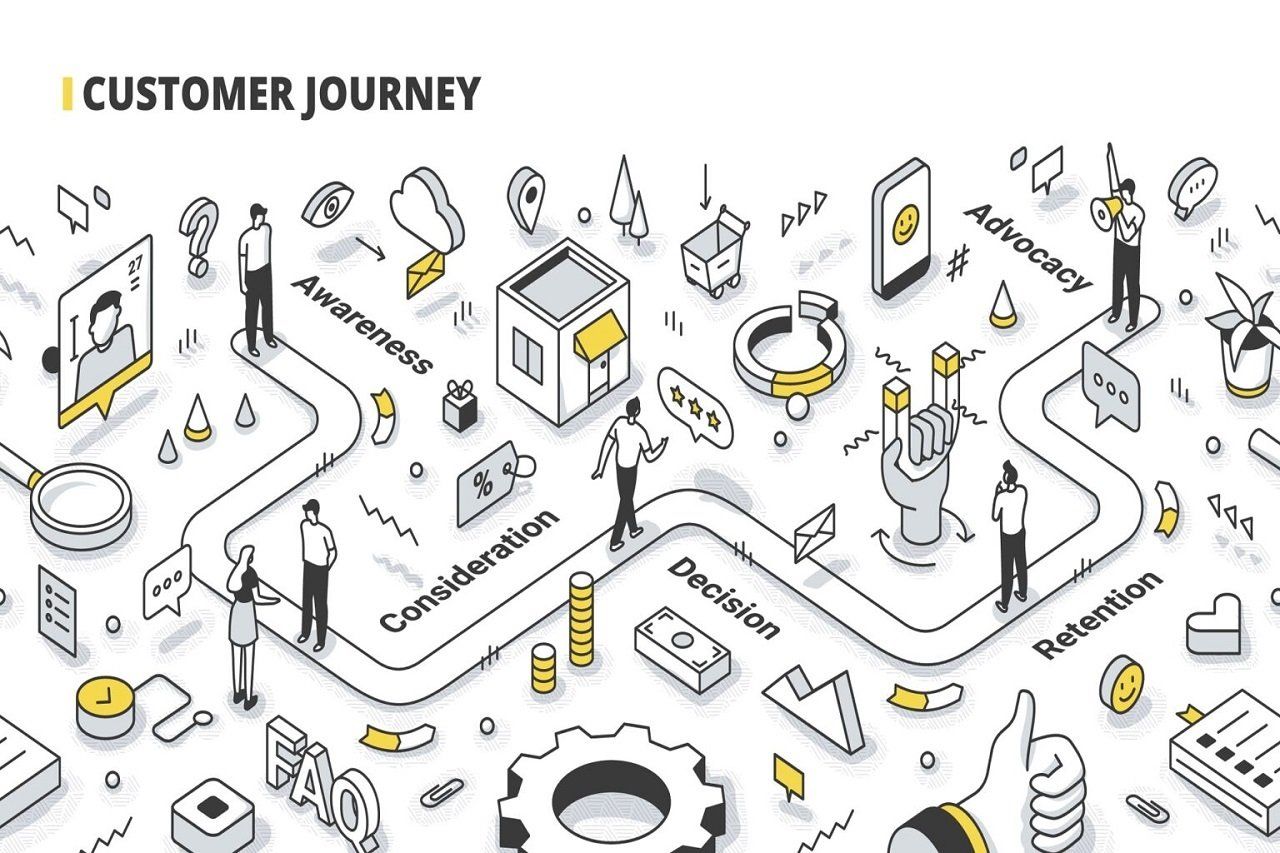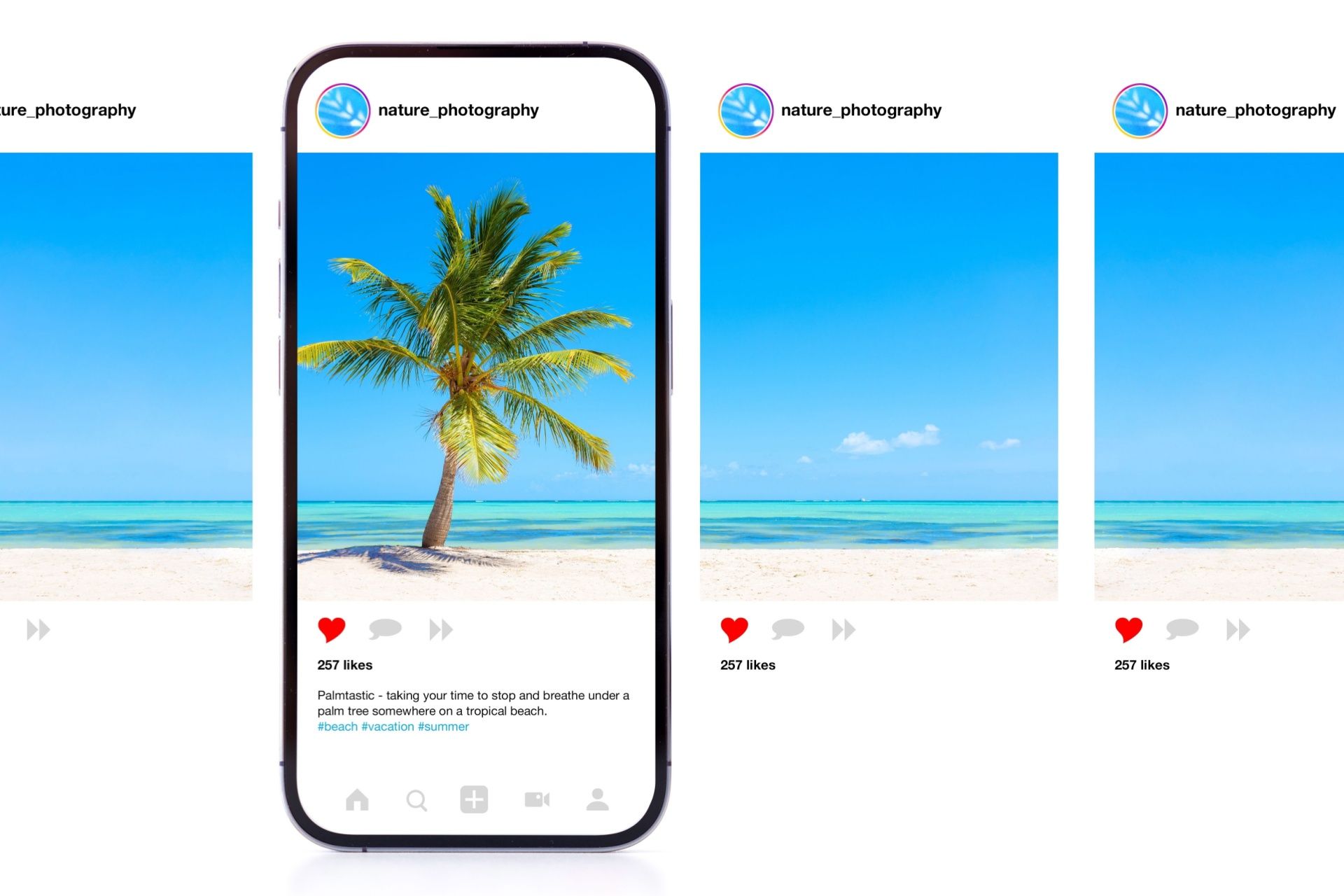What Is Customer Journey Optimization For Law Firms?

We’ve talked a lot about the ideal customer/client journey on our blog, so we wanted to dedicate this post to explaining the marketing concept and why we write about it so much. When did marketing become so Homeric, right? Just like Odysseus, your target audience experiences an epic journey on the way to becoming your client.
OK, maybe not just like Odysseus – there will be no giant cannibals or slaughtering of suitors going after their spouses (unless you practice criminal law). However, the journey your clients take will help you develop better marketing plans and create more efficiency with your marketing dollars. This article explains everything you need to know about your customers’ journey from what it is, why it’s important, how to create a map and how to optimize that map.
What’s a Customer Journey?
A customer/client journey is defined as the complete sum of experiences that customers go through when interacting with your firm and brand. The customer journey documents the entire experience of being your client . Here are a few items that might show up in your client journey:
1. Your website
2. Google or social media reviews
3. Your client service team
4. Email marketing campaigns
5. Your paid advertising (Google search ads, display ads or social media ads)
6. Billboard, newspaper, television or radio ads
As you can see from the list, there are multiple touchpoints that make up your clients’ experience/journey. These touchpoints can be broken down into phases: awareness, interest, consideration, action, and loyalty. Understanding the right touchpoints for your ideal clients in the right phases of the marketing funnel is the key to a great marketing plan.
An experienced marketing firm, like Oamii Digital Marketing Agency , can help you with your customer journey optimization to ensure you’ve got the right tactics in the right places to convert qualified legal clients.
Why Should I Map My Customers’ Journey?
Mapping your customer journey is how you ultimately scale your marketing plans to produce a higher return on investment. Analyzing your client experience helps you understand how your clients traveled through the entire sales and marketing process and how they felt once they became your actual client, which, in turn, helps you analyze your firm and know where to make needed improvements.
A huge benefit of mapping your client journey is that it helps you to run a more client-centric business, which is increasingly important for service-based firms. A Bain & Company report stated a business can grow revenues between 4 percent and 8 percent above their market when they prioritize better customer service experiences. It can also be argued that the concept of client service is a predominant part of practicing law. Here are a few more benefits of customer journey optimization:
1. Your firm can shift to a more inbound marketing perspective
– This means you’ll have qualified leads coming to you more often versus you putting in more legwork trying to seek them out on your own.
2. You can improve your client retention and referral rates
– This goes back to customer service; the more they like you, the more they come back and/or refer their friends and family.
3. You begin to better understand who your clients are
– When you can better narrow down exactly who your clients are (demographics, psychological traits, where they live online, where they shop, how they speak, etc.) you are able to be more effective and efficient with your marketing, as opposed to targeting anyone and everyone hoping to get some qualified leads out of the effort.
How Do I Know What My Customers’ Journey Is?
To understand what your customer journey is, you need to conduct research and track your clients. There is a process to mapping the experience, and Step 1 is to identify your end goal. Why are you creating a customer journey map? Many of our clients desire more qualified leads, so let’s use this goal as an example. We’ll walk through this with the hypothetical goal of acquiring more leads through your website.
In Step 2, you begin to conduct the actual research by asking your current clients about their experiences. You can do this by implementing surveys or questionnaires. Here are a few great questions to ask your clients:
1. How did you hear about our law firm? (If you ask no other question, make sure you always ask this one.)
2. What initially brought you to our website?
3. What issues brought you to our firm? (This will give you a good insight into your clients’ pain points, which you probably have a good general idea of already.)
4. How long did you spend on our website before you decided to contact us?
5. What other attorney sites did you look at before you made your decision to contact us?
6. Did you read any of our blog posts, and if so, which ones did you find most helpful?
7. On a scale of 1 to 5 how easy was our website to navigate?
8. How helpful was our client service on a scale of 1 to 5? (We suggest allowing comments here, too, because you’ll find out a lot of good qualitative data about your client service)
9. How could we have improved this process for you?
Step 3 is ensuring that you’re noting demographics, psychographic, and legal services throughout your research to outline client personas. You want to do this because if you group too many personas into one client journey, it won’t accurately represent your client experience. This will help you highlight your ideal clients and target them more effectively.
Step 4 is to make a list of all your marketing touchpoints, which might include your website, social media channels, online directories (like your Google Business Listing or legal directories, like FindLaw or Lawyers.com), paid ads and email marketing. To create a comprehensive list, include all of your marketing efforts and do a quick Google search to see where your firm shows up online. From there, narrow your list down to the touchpoints that are most relevant and mentioned by your clients. These tactics will make up your customer journey map.
Step 5 is listing all actions taken by your clients as they interact with your brand. This will include Google searches, email clicks or opens, web pages viewed, etc. This will be a long list that you will narrow down later. Completing this step will let you know if you have too many actions in your customer journey, which could indicate obstacles within it, meaning you’re making it difficult for your customers to find you and likely losing many qualified leads along the way.
Step 6 is highlighting any and all emotions, motivations, obstacles, and pain points your clients experience on the journey. As an example, take a probable personal injury case journey: Ted gets into a car accident and is injured (inciting incident). He cannot work because of it, and he’s on the verge of losing his home. Ted feels desperate and hopeless, so he decides to ask Google what to do.
He quickly finds an attorney website and clicks on a seemingly helpful blog post. Unfortunately, the blog post takes too long to load, and Ted hits the back button and scrolls down to find another search result. He finds another website and clicks through to a helpful blog post about his exact situation.
He finds that another blog post on the website has been linked on the page, so he clicks through to it, continuing to educate himself. Building up trust and confidence, he navigates easily to the contact form and fills it out. Ted waits one day and never gets an email or call from the firm, so he goes back to Google and searches for another option, clicking on a Google business listing and calling a competing firm to schedule a consultation.
This is an example of a simplified customer journey with emotions, motivations, obstacles, and pain points, labeled below:
1. Emotions – Ted feels overwhelmed, desperate and hopeless after his accident as he is unable to work and faces losing his home.
2. Motivations – Ted can’t work to pay his mortgage, which motivates him to find a solution by searching Google.
3. Obstacles – Ted finds his first customer journey obstacle when he clicks on the first site and it fails to load in a timely manner. He finds his second obstacle when he contacts a firm that doesn’t return his email.
4. Pain points – Some pain points Ted’s faces are outcomes of the obstacles,
including a slow website and poor, untimely customer service.
Once you’ve analyzed your clients’ journey, you can then take the journey yourself to better understand the experience and where you can make improvements to cut down on pain points and obstacles that your potential clients might encounter. This is called customer journey optimization.
Can You Help Me Map It?
The best way to analyze, optimize and implement a strategic customer journey to gain more qualified leads is to hire a marketing agency. A marketing agency can help you conduct the research, analyze the results and then optimize your client journey.
As a full-service digital marketing agency, Oamii has helped many law firms understand and map client journeys, improving their marketing plans to increase overall marketing efficacy. With our marketing tools and our experienced team, we’ll help you get the most out of your marketing dollars. Give us a call today at 561-228-4111 or fill out our contact form to get started mapping your customer journey.
Disclaimer: The information on this website and blog is for general informational purposes only and is not professional advice. We make no guarantees of accuracy or completeness. We disclaim all liability for errors, omissions, or reliance on this content. Always consult a qualified professional for specific guidance.








